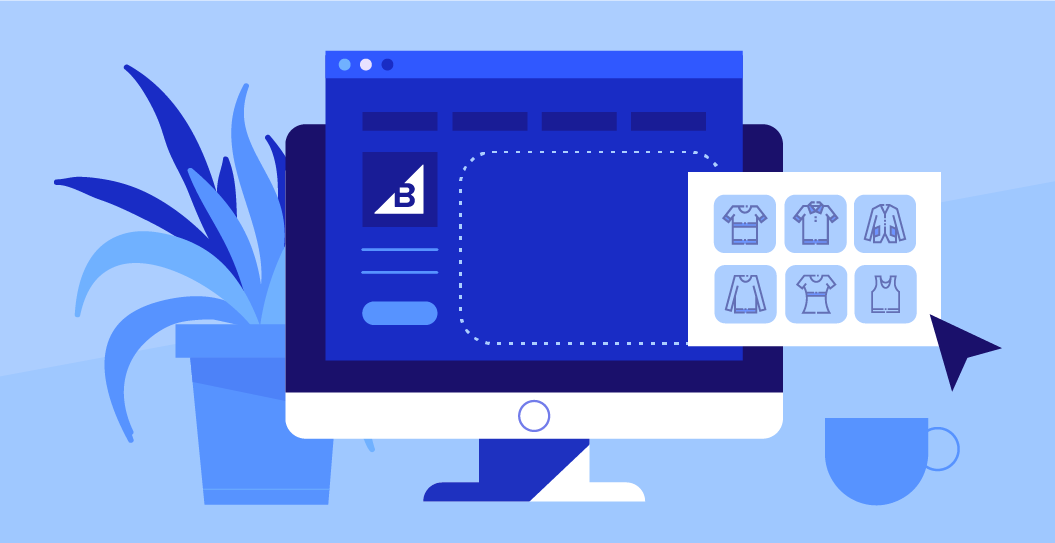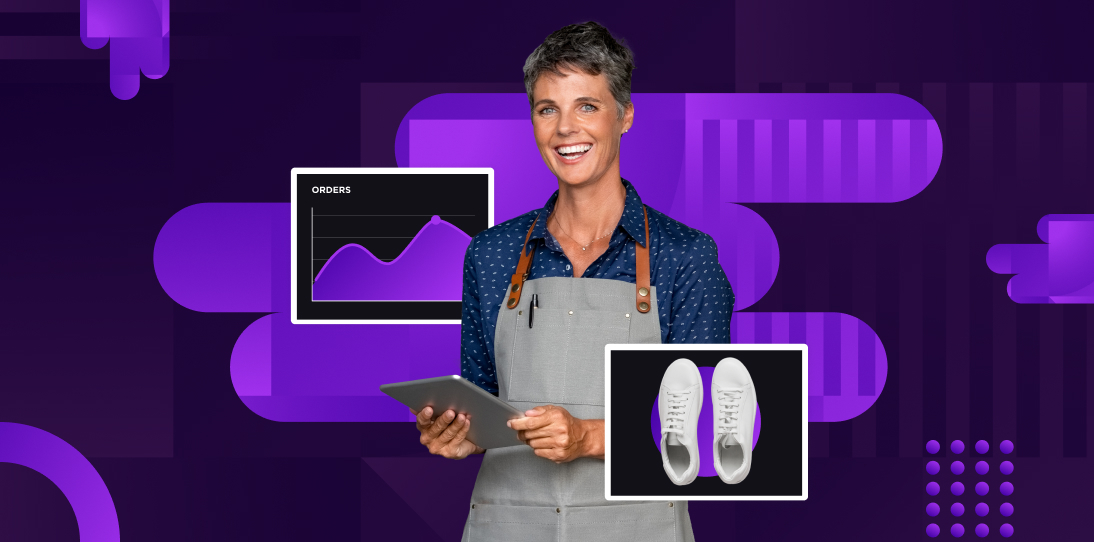- Enterprise
- Essentials
Unlock the Power of Ecommerce Subscriptions to Transform Customer Experiences

Gone are the days when subscription services were limited to magazines, newspapers, and streaming services. Today’s consumers can buy everything from electric toothbrush heads to cases of wine, meal kits, and entire wardrobes on a subscription basis.
Direct-to-consumer (DTC) businesses are embracing the subscription model trend as consumers demand convenience, personalization, and cost savings. The global subscription ecommerce market is expected to reach $904.28 billion in 2026, with an annual growth rate of nearly 66%.
From curated subscription boxes to automated refills of everyday household items — never run out of coffee or dish detergent again — the rise of ecommerce subscriptions has revolutionized how brands engage with their customers.
Ecommerce companies benefit from recurring revenue and predictable demand, while customers enjoy the convenience of having essentials, indulgences, or even curated surprises delivered to their doorstep regularly.
Subscription models enable businesses to capture market share and build long-lasting customer relationships through personalized product offerings.
Types of ecommerce subscription models
Subscription models differ by product type, such as consumables requiring regular replenishment versus taste-based items that are curated.
Replenishment subscription.
Replenishment subscription models deliver essential or regularly consumed items to customers regularly. Also known as “auto-replenishment,” the value proposition of replenishments is that customers never run out of essential items or have to reorder them manually on a regular basis.
Customers may benefit from bulk pricing by receiving large orders on a monthly or quarterly basis. Eligible products typically include personal care items, household supplies, groceries, and other necessities.
Curation subscription.
Curation subscription models deliver a curated selection of products to customers on a recurring basis. Customers subscribe to receive a box, package, or collection of items based on their preferences or specific themes while benefiting from a tastemaker’s expertise.
For example, clothing subscription businesses enable customers to benefit from a stylist’s aesthetic — a cheaper alternative to hiring an actual stylist. Meanwhile, skincare or cosmetics subscriptions let users test various samples before committing to a product.
The main objective is to surprise and delight customers by providing them with a curated assortment of items they may not have otherwise discovered.
Access subscription.
An access subscription provides exclusive access to subscription products, services, or content for a recurring fee. Rather than focusing solely on delivering physical products, the access model grants subscribers special privileges, benefits, or enhanced experiences unavailable to non-subscribers.
For example, news publications often grant access to exclusive events and merchandise, while some credit card companies allow top-tier cardholders access to airport lounges and exclusive hotels.
Examples of access subscription models include:
Streaming services: Platforms such as Netflix, Hulu, and Spotify offer subscribers unlimited access to a library of movies, TV shows, music, and podcasts for a monthly fee.
Online learning platforms: Subscribers can access courses and tutorials to grow their knowledge and skills.
Software-as-a-Service (SaaS): SaaS businesses grant access to their software and support services.
Membership organizations: Gyms, clubs, and professional associations grant subscribers access to exclusive facilities, events, and networking opportunities.
Hybrid subscription.
Hybrid subscriptions combine the perks of various subscription models into one offering. For example, a company could offer an ecommerce subscription service that includes both regular deliveries of essential products and curated surprise items or a membership that grants access to exclusive content along with the option to replenish certain products periodically.
By combining different models, businesses can create a more comprehensive value proposition, appealing to a broader range of customers.
How ecommerce subscription models add value
Subscription models provide businesses with recurring revenue while customers benefit from convenience and access to products and services they value.
Increased customer lifetime value (CLTV).
Ecommerce subscription models are built on the concept of recurring revenue, which hinges on customer retention. When customers subscribe to a product or service, they commit to regular purchases over an extended period.
Therefore, ecommerce subscription businesses are incentivized to cultivate long-term customer relationships by regularly rotating their inventory and offering personalization.
Streamlined inventory management.
Subscription models make it easy for businesses to forecast demand. Subscribers commit to receiving regular deliveries over a specified period, providing a predictable demand pattern.
By analyzing historical subscription data, businesses can determine the appropriate inventory levels needed to fulfill subscription orders without overstocking or experiencing stockouts.
Easier financial forecasting.
Ecommerce subscriptions typically involve recurring payments at monthly or quarterly intervals. Some businesses provide discounts for upfront annual subscription payments as this further simplifies financial forecasting. This recurring revenue stream provides a consistent cash flow.
Businesses can project their future cash flow based on the number of active subscribers and subscription fees paid. Naturally, businesses must factor metrics such as customer churn rate, renewal rates, and new subscriber acquisition into their forecast.
Establishing a highly loyal customer base.
A subscription represents a commitment, unlike a one-time purchase. It indicates the customer likes your product enough to reuse it or enjoy continued access.
Subscriptions often include exclusive benefits, discounts, or personalized experiences non-subscribers can’t access. This sense of exclusivity and added value creates a positive perception of the brand and reinforces customer loyalty.
Challenges of an ecommerce subscription model
Unfortunately, many of the benefits inherent in subscription models — recurring revenue, higher CLV, and predictable demand — also present business challenges.
Regulatory compliance.
The subscription model requires businesses to collect and store customer data, including personal and financial information.
Businesses must comply with data privacy laws, such as the General Data Protection Regulation (GDPR) in the European Union or the California Consumer Privacy Act (CCPA) in the United States.
Subscription businesses must also comply with regulations set by the Consumer Protection Financial Bureau. For example, the business must explicitly state if a subscription automatically renews until or unless the customer affirmatively cancels it.
The Federal Trade Commission (FTC) has proposed a “click to cancel” provision that entitles consumers to cancel subscriptions through the same process they used to sign up. This means that if a customer signed up for a subscription online, they should not be forced to call or write an email to cancel.
Addressing customer segmentation.
Ecommerce subscription models often attract a diverse customer base with varying needs, preferences, and behaviors. Identifying distinct customer segments can be taxing as subscribers have different motivations and varying levels of engagement. Some customers may take advantage of all the perks their subscription affords, while others only dabble.
Secondly, customer interactions are limited compared to traditional retail models that involve repeat purchases, making it more challenging to understand customer preferences and behaviors.
Overcoming customer churn.
Customer churn is a significant problem for a subscription company. Customers may cancel or fail to renew their subscriptions for myriad reasons.
For example, they might find that the replenishments are too frequent but don’t know they have the option to modify delivery frequency. Or, they may be unaware of the full range of perks included with their subscription.
Businesses should continuously provide value to justify the subscription cost and ensure the offer remains compelling to subscribers.
Managing inventory issues.
Subscription models require forecasting recurring demand over an extended period. The fluctuating nature of subscriptions — acquisition, retention, and cancellations — can make demand forecasting more complex.
Subscriptions with customization options require businesses to maintain a certain product assortment for customers to choose from by accurately anticipating demand for different product options.
Key factors for ecommerce subscription success
Subscription businesses can sail ahead of the competition by using a robust ecommerce platform, understanding their customer base and personalizing the customer experience.
Developing a strategic pricing approach.
Subscriptions cost more in the long run than one-time purchases. Strategic pricing helps customers justify the costs more easily. Here are some factors to consider:
Offer tiered pricing: Create multiple subscription tiers with varying levels of features or access. This allows customers to choose a package that best suits their needs and budget.
Offer a free trial or freemium model: Let customers try the product before committing to a subscription. For example, they might receive access to a basic version of your software or receive one curated box for free.
Incentivize upfront payment: Many subscription businesses offer customers a discount for paying an annual subscription upfront instead of charging monthly fees.
Monitor and adjust pricing over time: Track key metrics such as customer acquisition cost (CAC), customer lifetime value (CLV), subscription renewal rates, and overall revenue.
Harnessing advanced tools and platforms.
Subscription-based businesses need a sophisticated technology stack to analyze customer behavioral data, manage inventory, and offer personalized recommendations.
Subscription management software: These platforms automate customer onboarding, billing and invoicing, order management and email communications. They provide a centralized system to store customer data, track subscription status, and manage trials.
Ecommerce platforms: BigCommerce is an ecommerce platform that offers integrations, custom APIs, website templates, and subscription functionality for your ecommerce store. Choose from a selection of recurring billing and subscription plugins to help you manage subscriptions for your storefront.
Customer relationship management (CRM) system: CRM systems provide a comprehensive view of customer interactions, purchase history, and engagement metrics. Businesses can analyze customer behavior and create segments for tailored campaigns.
Marketing automation platforms: These tools automate tasks such as email marketing, campaign management and customer journey mapping — allowing businesses to deliver timely and relevant messages, upsell or cross-sell products, and nurture customer relationships through automated workflows.
Succinct inventory management and shipping.
Timely deliveries are critical to the success of a subscription business. This requires online stores to run a tight ship regarding inventory management.
Given the advantage of predictable demand patterns, subscription-based businesses can take advantage of just-in-time (JIT) inventory management: using predictive analytics to order goods right before they are needed to reduce holding costs and prevent over-or understocking.
Implement a robust inventory tracking system that provides real-time visibility into inventory levels, order status, and stock movements.
Simplifying payment processing.
Provide a variety of payment options to accommodate customer preferences. Accept major credit cards, debit cards, and alternative payment methods like digital wallets.
This reduces friction during the checkout process and caters to a broader customer base. Choose a secure payment gateway that encrypts customer data and complies with industry security standards.
Utilizing advanced marketing strategies.
Implement lifecycle marketing strategies to nurture customers at different stages of the journey. Develop targeted campaigns for acquisition, onboarding, retention, and reactivation.
Create email automation workflows to check in with existing customers and offer customization options, and offer exclusive incentives and win-back campaigns for past subscribers to reactivate their membership.
Referral programs, influencer marketing and social media marketing should be a key part of your marketing toolbox.
Ensuring data security and compliance.
Data security is crucial for ecommerce subscription businesses that handle sensitive customer data. Here are some measures to take:
Use secure data storage solutions: Use encrypted databases or cloud storage solutions to store customer data. Implement access controls to restrict unauthorized access and regularly update software to address vulnerabilities.
Use Secure Sockets Layer (SSL) encryption: SSL encrypts data transmitted between a customer’s browser and your website, ensuring sensitive information remains confidential and cannot be intercepted.
Protect credit card information: Ensure compliance with PCI DSS standards. This includes implementing secure networks, regularly monitoring systems, and maintaining strict access controls.
Common mistakes to avoid with ecommerce subscription
The subscription model requires careful attention to inventory management, customer segmentation, and market research.
Overlooking logistics, shipping and inventory challenges.
While focusing on acquiring customers, businesses may underestimate the complexity of managing the physical aspects of their operations. Common pitfalls include:
Scaling operations: As the business grows, order and shipment volumes increase. This puts pressure on logistics and shipping processes, especially if the infrastructure is inadequately prepared to meet higher demand.
Inventory management: Stockouts and delays can lead to dissatisfied customers and increase churn.
Reverse logistics: Managing returns and exchanges are critical aspects. Failure to establish a clear return policy and a streamlined returns process reduces consumer confidence, making them less likely to subscribe in the first place.
Insufficient market research.
Market research enables businesses to understand their target audience, market demand, and ideal pricing strategy. Neglecting this due diligence leads to poor product-market fit — subscription offerings that fail to address customer pain points.
Selling subscriptions requires a targeted approach to serving a relatively niche audience.
For example, many people buy cosmetics, but only a certain type of cosmetics buyer finds the subscription model compelling (eg: a heavy user). The main value proposition of a subscription is personalization; consequently, ecommerce subscription businesses must know their target audience inside out.
Overcomplicating subscription plans.
Subscription options should be easily distinguishable and transparently priced. Offering multiple pricing tiers with excessive add-ons overwhelms customers and creates difficulty choosing the right option.
Some level of customization is beneficial. Too many options can confuse customers and obfuscates the value proposition of each.
Avoid pricing tiers with intricate transaction fees based on usage, product quantities, or feature limitations, which leads to frustration and hesitancy among potential subscribers.
Failing to address customer churn.
Understanding and mitigating churn is essential for sustaining business growth and maintaining a loyal customer base. Businesses may not have sufficient insights into customer pain points or dissatisfaction triggers.
Here are some other problems that may cause churn:
Lack of personalization: Tailor the subscription experience to individual preferences, particularly when it comes to curation.
Poor onboarding and user experience: Difficulties getting started, navigating the platform or accessing subscription benefits can lead to early churn.
Lack of value or relevance: Customers are more likely to churn if they feel the subscription no longer aligns with their needs.
Underestimating customer support.
Many subscription businesses treat customer acquisition as a one-and-done deal since interaction with the customer may be limited once they have selected a subscription plan. Some ecommerce businesses rely heavily on self-service options, such as FAQs, knowledge bases, or chatbots, to address customer inquiries.
While self-service is valuable, it should not replace personalized and responsive customer support.
Replatforming Guide: A Roadmap for Migrating Your Ecommerce Store
Make your ecommerce replatforming project a success with our step-by-step guide filled with best practices from enterprise migration experts.
Download NowThe final word
The subscription model offers significant benefits for ecommerce businesses, including predictable revenue, customer loyalty, and personalized customer experiences. It fosters strong customer relationships, provides financial predictability and enables long-term growth.
However, acquiring new customers, delivering consistent value, and optimizing pricing represent unique challenges associated with the subscription business model.
Nevertheless, the subscription model has grown increasingly popular for its ability to drive recurring revenue to businesses while providing customers convenience and personalization.
FAQs about ecommerce subscription
How can ecommerce subscription businesses tackle customer churn?
Ecommerce businesses should take a proactive approach to tackling customer churn. First, they should analyze customer data and collect feedback to determine common pain points that lead to cancellation.
Businesses can track engagement KPIs such as usage patterns, login frequency, or content consumption to identify customers at risk of churn. They can re-engage these customers through personalized messages, targeted offers, or proactive support.
How can ecommerce subscription businesses safeguard data security?
Ensure that your website and subscription platform are built on a secure infrastructure. Use robust security protocols such as HTTPS encryption and SSL certificates to protect data during transmission. Regularly update and patch software and plugins to address vulnerabilities.
Safeguard customer data by implementing secure storage practices. Encrypt sensitive customer information such as passwords, credit card details, and personal identifiers.
Finally, use secure servers and databases with appropriate access controls, firewall protection, and intrusion detection systems (IDS).
What are the best marketing channels for ecommerce subscription businesses?
Ecommerce subscription businesses have a range of channels to promote their offerings and attract new subscribers.
Social media marketing:Create engaging content, run targeted ads and leverage influencer partnerships to increase brand visibility.
Affiliate marketing: Partner with websites or content creators your target audience follows. Affiliates can promote your subscription and earn a commission for each referral.
Content marketing: Offer valuable information through blog posts, SEO articles, videos, or podcasts aligned with your subscription offering.
Search engine marketing (SEM): Run paid ads to appear prominently in search engine results when users search for relevant keywords.



